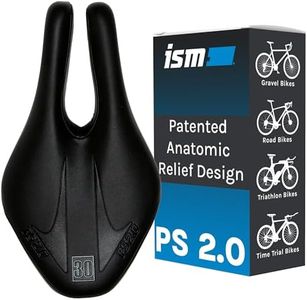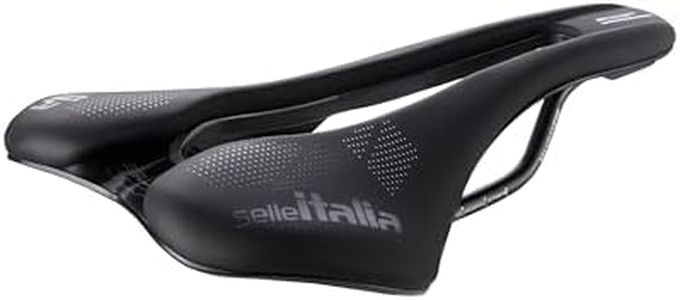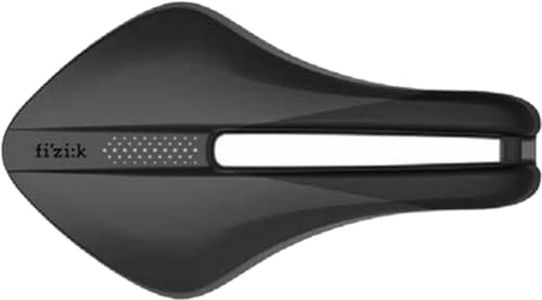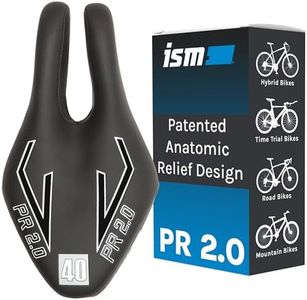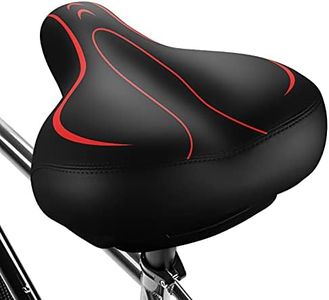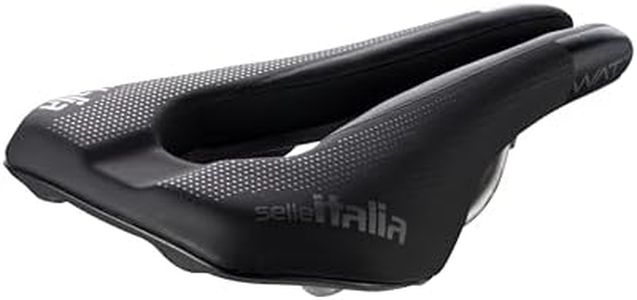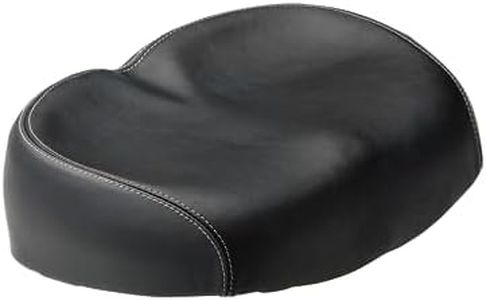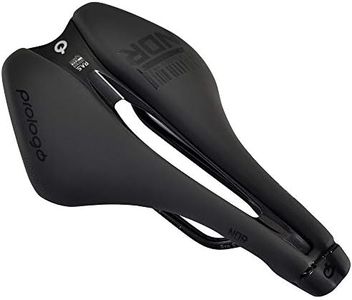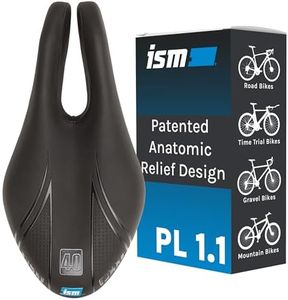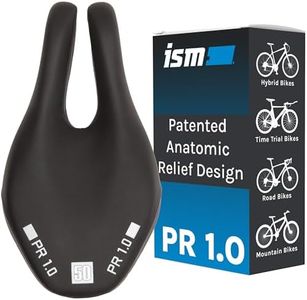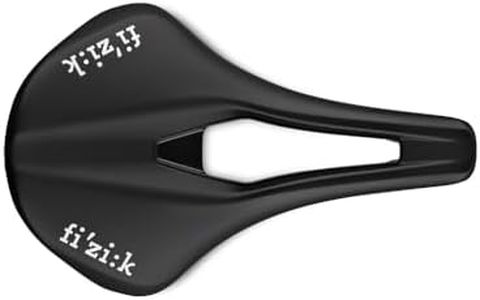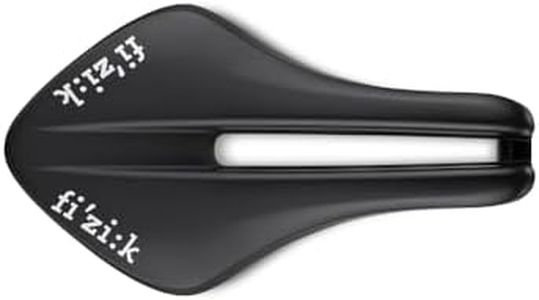We Use CookiesWe use cookies to enhance the security, performance,
functionality and for analytical and promotional activities. By continuing to browse this site you
are agreeing to our privacy policy
10 Best Triathlon Bike Seats
From leading brands and best sellers available on the web.Buying Guide for the Best Triathlon Bike Seats
Choosing the right triathlon bike seat is crucial because it can make a big difference in your comfort, performance, and overall experience during training and races. Since triathlon bike positions are generally more forward and aggressive than regular road cycling, the seat needs to support you in a way that avoids numbness and discomfort, especially over long distances. The ideal seat will balance support, pressure relief, and fit for your own body shape and riding style. To pick the right seat, it's important to pay attention to a few key features and consider how they relate to your body and the way you ride.Shape and ProfileThe shape of a triathlon bike seat refers to how wide, long, and curved it is, and this affects how it supports your body. Some seats are flat and narrow, while others have a pronounced dip or wider back. Generally, riders who are more flexible and ride in a low, aggressive position may prefer flatter seats, while those who ride more upright or need extra stability may benefit from a curved or wider profile. Think about your riding position and flexibility: if you often stay in the aero position (with your weight forward on the bike), a flatter, cut-out style can increase comfort, while a wider or more padded shape may suit those needing more support or who frequently change positions.
Padding LevelPadding provides cushioning between your body and the bike, helping to absorb shocks and reduce pressure. Seats range from minimalist, lightly padded options to those with thicker, softer cushioning. Lighter padding is often preferred by experienced riders who are used to spending many hours in the saddle and have conditioned themselves to the pressure, as too much padding can cause chafing or pressure points. On the other hand, beginners or those doing shorter distances might prefer moderate to higher padding for more immediate comfort. Consider the distance you plan to ride and your own tolerance for firm surfaces—long-distance athletes may eventually prefer less padding for sustained comfort.
Nose Width and DesignThe nose of the seat is the front section where most pressure can occur in the aero position. Some triathlon seats have a very narrow nose, while others are wider or even split to relieve pressure. If you spend most of your time tucked in the aero bars, a seat with a cut-out or split-nose design can help reduce numbness and improve blood flow. The right choice depends on your anatomy and how aggressive your position is: people prone to discomfort or numbness may find greater relief with a unique nose design, while others who move around more may not need as much of a specialized nose.
Cut-outs and Pressure Relief ChannelsMany triathlon seats include a central groove, full-length cut-out, or pressure relief channel to reduce pressure in sensitive areas. This feature allows blood to flow more freely and can help prevent numbness and discomfort, especially over long rides. Seats without a cut-out may offer more support for riders who don't have pressure issues, but those who tend to get numbness or discomfort should consider a significant groove or channel. Assess your experience: if you notice numbness or tingling, a seat with a noticeable central cut-out is likely a better fit.
Width and SizingBike seats come in different widths, and the correct width for you depends on your sit bone spacing—the area of your pelvis that contacts the seat. Narrow seats suit riders with closely spaced sit bones, while wider seats offer better support for wider sit bones. Using a seat that's too narrow can cause discomfort and pressure, while too wide a seat may lead to rubbing and irritation. Many bike shops offer devices or tools to measure your sit bone width. As a general approach, try different widths if possible, and let your comfort guide you—your seat should support your bones, not just soft tissue.
Material and CoverThe cover material affects both durability and comfort. Common seat covers include synthetic materials, leather, or even special textured surfaces to prevent sliding. Synthetic covers tend to be weather-resistant and easy to clean, while natural materials like leather can offer more breathability and a unique feel but may require more care. Your choice may come down to personal preference and how the seat feels against your body during training—some prefer a slicker surface for easy movement, while others like a grippy texture to stay positioned.
